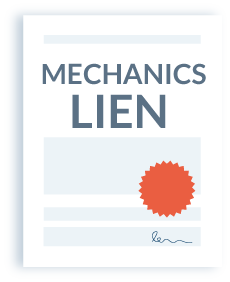
Public-Private Partnership (P3) projects present unique challenges to those in the construction industry facing non-payment. Mechanics liens, bond claims, both, or neither may be appropriate. Let’s take a look at how these projects are structured, and when and how to
Public-Private Partnerships Generally
What Is a P3 Project?
Public-private partnerships are rapidly growing in popularity, and represent a growing segment of construction projects. This type of project, also known as a P3 project, is a one in which both public and private entities invest together, and both may have some “property rights” or ownership, on what is, essentially, a public project. There is no specific structure for P3s that is routinely used, and the financial, and other, risks of the project are transferred or allocated between the parties pursuant to their particular agreement. Because of this, the underlying structure of the construction contract can have a significant impact on the nature of the project and the applicable remedy.
This project type is becoming more prevalent in the industry for many reasons, potentially chief among which is the ability for a financially-strapped public body to privately finance an improvement by allocating some of the financial risk and subsequent reward to pirate companies. This allows the public entity to incur reduced delivery costs associated with the construction of the improvement as compared to the traditional “design-bid-build” method that has been historically employed. The new public-private partnership method can be described as something more akin to a “design-build” or “design-build-operate” type of agreement. While P3s by name are public-private partnerships, they are routinely not a traditional partnership as commonly understood.
So Is a P3 Project Public or Private? Or Both?
Because of the odd nature of public-private partnership projects, i.e. are they fundamentally public projects, private projects, or some of both, the nature of the remedy (if any) available to unpaid participants on the project is difficult to determine. This can create problems in attempting to recover, and can potentially lead to participants on some projects being unprotected by the traditional means.
This question is of the utmost importance to unpaid participants in a public-private partnership project. The protection provided, and the means to induce payment is dependent on which type of project is at issue. The laws and remedies for entirely private projects (mechanics liens) and purely public projects (bond claims or liens on funds) are clear, but unfortunately for these hybrid projects, that is not the case. Further complicating the issue is the familiar problem that the laws regarding these remedies differ by state – the determination leading to a particular project’s classification in one state may not work in another, or even if it does, the result may not be the same. And, all of this is on top of the general difficulty one sometimes encounters in determining project type.
Factors to consider
There are numerous factors to consider in making the determination of whether a particular project is fundamentally public or private in nature, at least regarding the applicability of mechanics lien or bond claim rights. These factors can include the underlying fee interest property owner, whether there is an interest in real property other than that of the fee owner sufficient to give rise to lien rights, the funding of the project, and the underlying contracts for the improvement itself can all be factors. It’s important to note that the label given to the project by the project name or title is not the deciding factor, and may not be correct.
An evaluation of the project considering multiple factors must be undertaken prior to making a determination as to whether the project will be governed by the private mechanics lien remedy, the public bond claim remedy, or if the project falls into an area where no remedy may be available. The determination of the actual project type has significant importance in the potential remedies available, so this evaluation should not be relegated to an afterthought.
P3 Projects Growing In Popularity on Airport Improvements
Public-Private Partnerships and Mechanics Liens
Generally speaking, the mechanics lien remedy only applies to private projects and privately owned property. Sovereign immunity, and the specific statutory language of the Federal Miller Act and the individual states’ Little Miller Acts prohibit mechanics liens from attaching to public property. Because of this, in order for a mechanics lien to be the proper remedy to secure an extension of labor and/or materials on a public-private partnership project, there must be some private property interest sufficient for the attachment of the mechanics lien. This can vary greatly by state.
For example, in some states, a leasehold interest is a property interest on which a mechanics lien can attach, but in other states that is expressly forbidden. Clearly, if a mechanics lien can attach to a leasehold interest, there may be an ability to claim a valid mechanics lien even if the underlying property is publicly owned (provided certain other factors are met).
In order to examine how this type of mechanics lien remedy may work on public-private partnership projects, we can take a look at how the issue has been treated in the courts. In a California case, South Bay Expressway v. Otay River Constructors, 434 B.R. 589 (Bankr. S.D. Cal. 2010)., the P3 project at issue was the construction of a toll road. The California Department of Transportation (CalTrans) entered into an agreement with a private developer to construct the toll road, and part of the agreement allowed the developer a 35-year lease to collect tolls and operate the toll road. The developer then entered into contracts with a general to perform the construction of the road itself. After the project’s completion, the general contractor remained unpaid, and filed mechanics liens against the developer’s leasehold interest, and sought to foreclose those liens. The developer, which had filed for bankruptcy protection, contested the validity of the mechanics liens for being placed on public property / on public work.
At issue was the intersection of the public property (the toll road) and the private property interest (the lease to operate the toll road and collect tolls granted to the developer). Despite the fact that the underlying property was publicly owned by CalTrans, the court determined that the leasehold interest and right to collect tolls was a private property right to which a mechanic alien could attach. Further, despite the underlying public nature of what was being constructed, the developer had the right to privately finance and develop the road. This means that the GC contracted with the developer and not the public entity, and thus the work was properly classified as a private work (for ultimately a public benefit). Because of this, the mechanics lien was allowed.
Another California case outlines the specificity needed in both the contracts and the mechanics liens, however. In North Bay Constr., Inc. v. City of Petaluma, 49 Cal. Rptr. 3d 455 (Ct. App. 2006), a mechanics lien filed by a GC awarded a contract by a developer who had been granted a lease by a city to develop a sports complex, was struck down under the reasoning that mechanics liens could not be enforced against public property. In this case, the lien was claimed against the property, not the leasehold interest, and this proved fatal.
Getting it right, however, and claiming a lien against the leasehold interest or other private property rights against which a lien may generally attach still does not guarantee success, however. Different states have different interpretations of these complex situations, however, and even in states where liens on leasehold interests are allowed, the underlying nature of the work (or of the contract[s] giving rise to the work) must be examined.
Public-Private Partnerships and Bond Claims
So, if a mechanics lien isn’t the proper claim to pursue on a particular public-private partnership project, the answer must be to file a bond claim. This too, however, is not as straightforward as it seems it should be. The availability of a bond claim is ask guided by the determination of the project as “public” or “private”. The language of the contract for the development of the work, and more specifically, the parties to that contract are vitally important to the bond claim remedy.
The statutory requirements for payment bonds set forth by the Miller Act, and Little Miller Acts, are generally triggered by, and only required for, public projects. This can cause problems. In California, for example, a “public work” is defined by statute as “any work of improvement contracted for by a public entity.” In situations where the ability to contract for, develop, and operate the improvement (for a period of time), is given to a private company, the public entity may not be considered to be contracting for the work of improvement.
While this particular problem has not been addressed by most states, at least one has made a concerted effort to provide a solution. In 2012, Oklahoma amended its Little Miller Act such that it now specifically applies to private projects performed on public land. Oklahoma requires that a bond be provided for all projects on public property whether the improvement is public or private. This, however, is an outlier and most states do not specifically consider this situation.
P3 Projects Recap
Unfortunately, as the law stands now, there is no easy way to provide a cheat-sheet or a clear takeaway regarding which potential remedy (if any) applies. Clearly, though, no one specific solution is not universally applicable to all such public-private partnership projects, even within the same state. The determination of the appropriate remedy depends on the project state, the underlying contracts, and the existence of property rights against which a mechanics lien may attach.
As an attempt at a useful takeaway, I will give you this: If the underlying property is public a mechanics lien cannot attach to the underlying property, and the way a mechanics lien may be the applicable remedy is if there is a private property right, such as a leasehold interest, to which the lien could attach. However, if the underlying contract is public the mechanics lien right may still not apply. Likewise, if the underlying contract is private, but the underlying property is public, the statutory bonding requirements may not apply.
This is an incredibly complex area of construction law and an area that it doesn’t appear legislatures considered when drafting the mechanics lien and bond claim laws. As these projects continue to become more and more popular, more consideration is needed by courts and legislators in order to clarify these issues.

